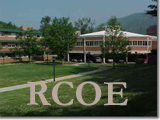Artifact #1
Context: My Literature Circle Unit was created during a reading course at Appalachian State University. The unit consists of Katherine Patterson’s books, A Bridge to Terabithia and The Great Gilly Hopkins. The unit can be used in a fifth grade class. I put the unit on the web for convenience and to see true examples of the roles in a Literature Circle.
Impact: I plan to use Literature Circles in my classroom to help children understand the depth and importance in reading literature. Literature circles are a great way to support higher level thinking skills. Literature Circles are also wonderful because they can be used to fit every student's instructional reading level. The different roles given in a literature circle help children acquire important skills like, leading a discussion, finding the important parts of a reading, learning new vocabulary, and many more.
Alignment: During my internship, many other
student teachers and I created literature circles. We conveniently
put them online so we could all have access to them. The literature
circle units can be altered to be developmentally appropriate for students.
(Tech.
II-A) Literature Circles are
great to use in order to reach all reading levels in a classroom.
By placing them online, the students also have experience with computers
and getting online. A Literature Circle Unit covers many curricular
objectives. It obviously meets many language arts objectives and
information systems objectives, but by putting them online it also covers
technology objectives. (Tech.
III-A)
The Literature Circle also satisfies INTASC
principle #3, which states that the teacher must understand how students
differ in their approaches to learning and creates instructional opportunities
that are adapted to diverse learners. The students have many different
roles within a literature circle. The roles like, Discussion Director,
Passage Picker, or Artful Artist help the teacher understand and use informal
and informal assessment strategies to evaluate and ensure the continuous
intellectual, social, and physical development.
(INTASC #8)
